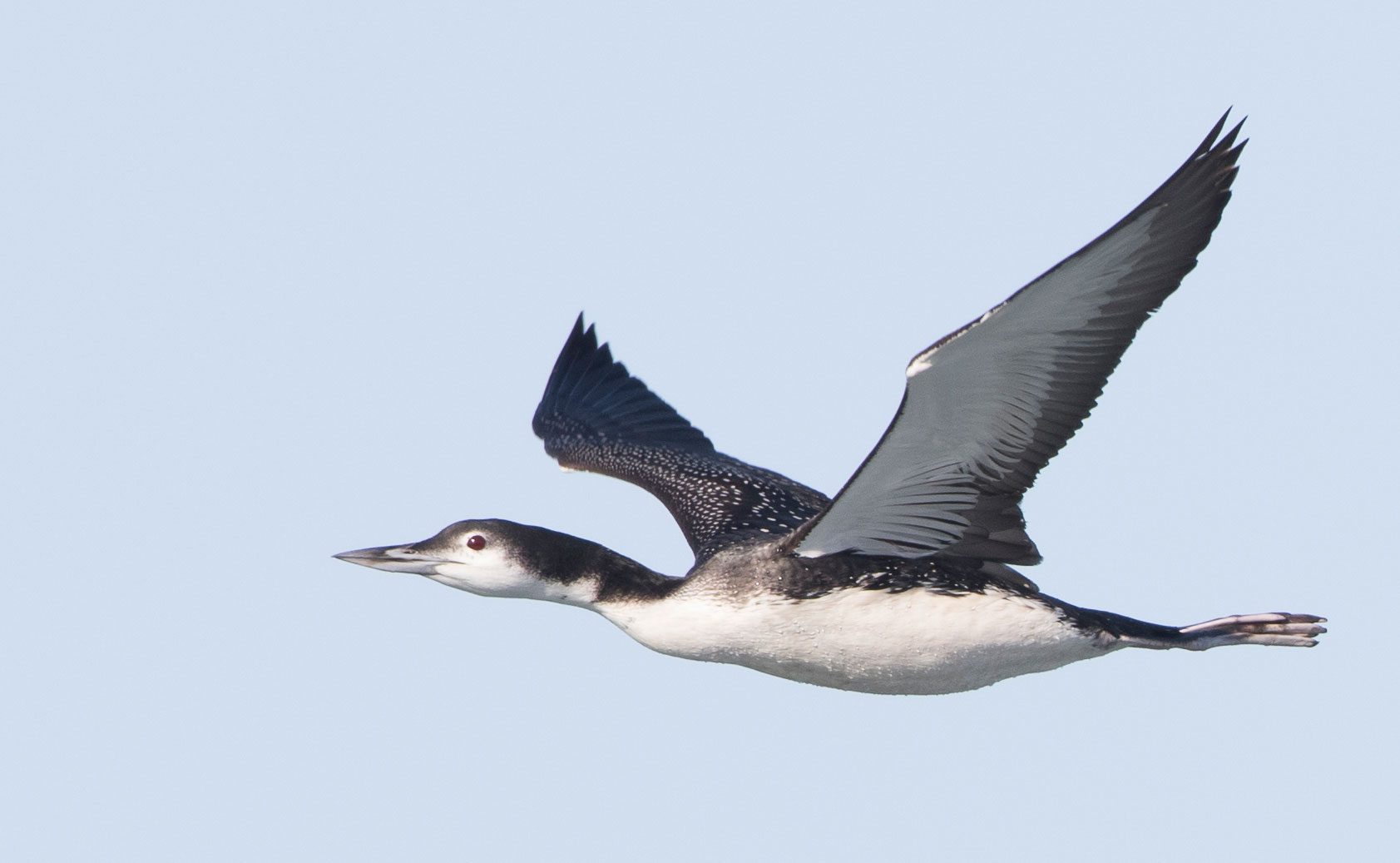View from Sapsucker Woods: First Impressions and New Horizons
By Ian Owens
December 21, 2021

From the Winter 2022 issue of Living Bird magazine. Subscribe now.
As I sit down to write this column in late November, the late-migrating loons have arrived in Ithaca—a tantalizing series of darts piercing the pale blue sky high above Sapsucker Woods. Usually just one or two, but occasionally in small groups. Sometimes hundreds in a day, in amongst the vast skeins of geese. All heading south.
As it’s been almost six months since I started as the new director of the Cornell Lab of Ornithology, people have stopped inquiring “How are you enjoying the Lab?” and have started asking “Are you ready for the winter?” I’m guessing not. But I love watching birds on the move as the seasons change, a visceral and humbling reminder of the vast scale of natural rhythms. How far have those loons traveled from their breeding grounds, and where are they heading for the winter? Will they make it back next year?
I have enjoyed every moment of my first months at the helm of the Cornell Lab. The combination of citizen science, technology, and storytelling is a potent one, and the Cornell Lab has established itself as a world leader. I’ve been incredibly impressed by the creativity, dedication, and expertise not only of the Cornell Lab’s teams, but of the wider movement of supporters, volunteers, citizen scientists, and educators who power our efforts to understand and conserve birds. The photo essay in this issue of Living Bird, curated from images in the Macaulay Library, is a wonderful celebration of that movement, made possible by birdwatchers and nature enthusiasts from around the world sharing their amazing images for the common good. It’s the collaborative spirit behind photographs, sound recordings, and sightings like these that makes it possible for us to do the big-data science that guides conservation policy and powers the cool apps, websites, and courses that spark the imagination of new birders.
We also have challenges, of course, but I’ve been happy to discover that almost all are linked to scaling our success. What one might call “good problems to have.” The most striking is the need to scale our technology to make sure we can support the huge growth in the number of people taking part, and the amount of information that is being created and used. As first steps we are moving a lot of our data and services onto cloud-based systems, and strengthening the links between projects, so it’s easier to move between them and access the full range of information. We also have a great opportunity to build on the success of our outreach and education programs to reach even larger and broader audiences and build partnerships with an even more diverse set of communities. How many potential bird enthusiasts are there in the world? 50 million? 250 million? Our ambition is to reach as many of them as possible and spark that passion.
Our most important driver is to translate our science and our storytelling into conservation action: to bend the curve of 3 billion birds lost. Again, this is a question of scaling. In this case, scaling our conservation impact. As I said in my previous View from Sapsucker Woods, a central element of that is to make sure that our data and analyses are providing conservation groups and decision-makers with the information and tools they need to make a difference. We will also need to build new partnerships to harness new technologies, influence policy, and enable on-the-ground conservation efforts.
Another of the great pleasures has been to experience the enthusiasm of other groups to collaborate even more closely with the Cornell Lab. There’s clearly a growing collective desire to work together to make a difference, and the Cornell Lab has an important role to play in that. We now need to scale our programs to meet that expectation.
So, it has been a stimulating first six months, filled with new friendships and ideas. I’m extremely grateful for the warm welcome that my wife Sally and I have been given by the extended Cornell Lab and Cornell University families. I can’t wait to help lead the next phase of the Cornell Lab’s evolution, and to see those loons head safely back to their breeding grounds.
Ian Owens is the Louis Agassiz Fuertes Director of the Cornell Lab of Ornithology.


All About Birds is a free resource
Available for everyone,
funded by donors like you





